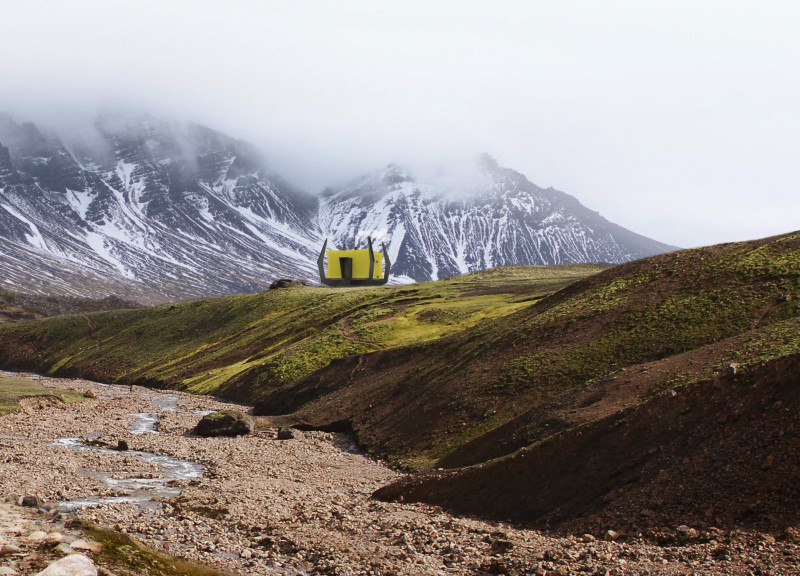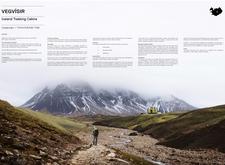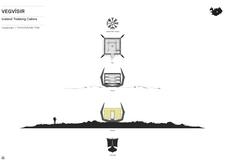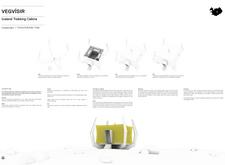5 key facts about this project
# Analytical Report on Vegvísir Iceland Trekking Cabins
## Project Overview
The Vegvísir trekking cabins are strategically located along the Laugavegur and Fimmvörðuháls trails in Iceland, serving as essential resting points for hikers navigating the area's diverse landscape. The design reflects an intention to harmonize the functional requirements of shelter with the cultural significance of Icelandic heritage, responding to the rugged natural environment.
## Materiality and Environmental Adaptation
The selection of materials for the Vegvísir cabins emphasizes durability and ecological compatibility. Prefabricated lightweight concrete enables efficient transport and installation in remote locations, while Cross Laminated Timber (CLT) enhances structural stability and provides warmth to interior spaces. Aluminum frames for windows contribute to both aesthetic appeal and weather resistance, complementing a waterproof fabric outer layer that safeguards against Iceland's variable climate. Further, photovoltaic panels incorporated into the design promote energy efficiency, making the cabins partially self-sufficient, and mineral wool insulation supports thermal comfort, crucial for occupants during colder months.
## Structural Configuration and Aesthetic Alignment
The architectural form of each cabin consists of three primary elements: external ribs providing both stability and visual interest, a membrane weather shield that ensures insulation and protection from the elements, and a central shelter box designed for occupant comfort. This box-like structure features large windows that invite natural light and frame views of the surrounding landscape. The geometric forms of the cabins echo the lines and arches characteristic of Viking architecture, creating a visual dialogue between historical influences and contemporary design. The internal layout facilitates social interaction with communal spaces, sleeping quarters, and strategically placed windows that enhance the user experience while minimizing thermal loss.
The placement of the cabins is thoughtfully aligned with the geological features and existing pathways of the trails, encouraging users to engage with the spectacular scenery and ensuring their safety amid Iceland's challenging weather conditions.





















































